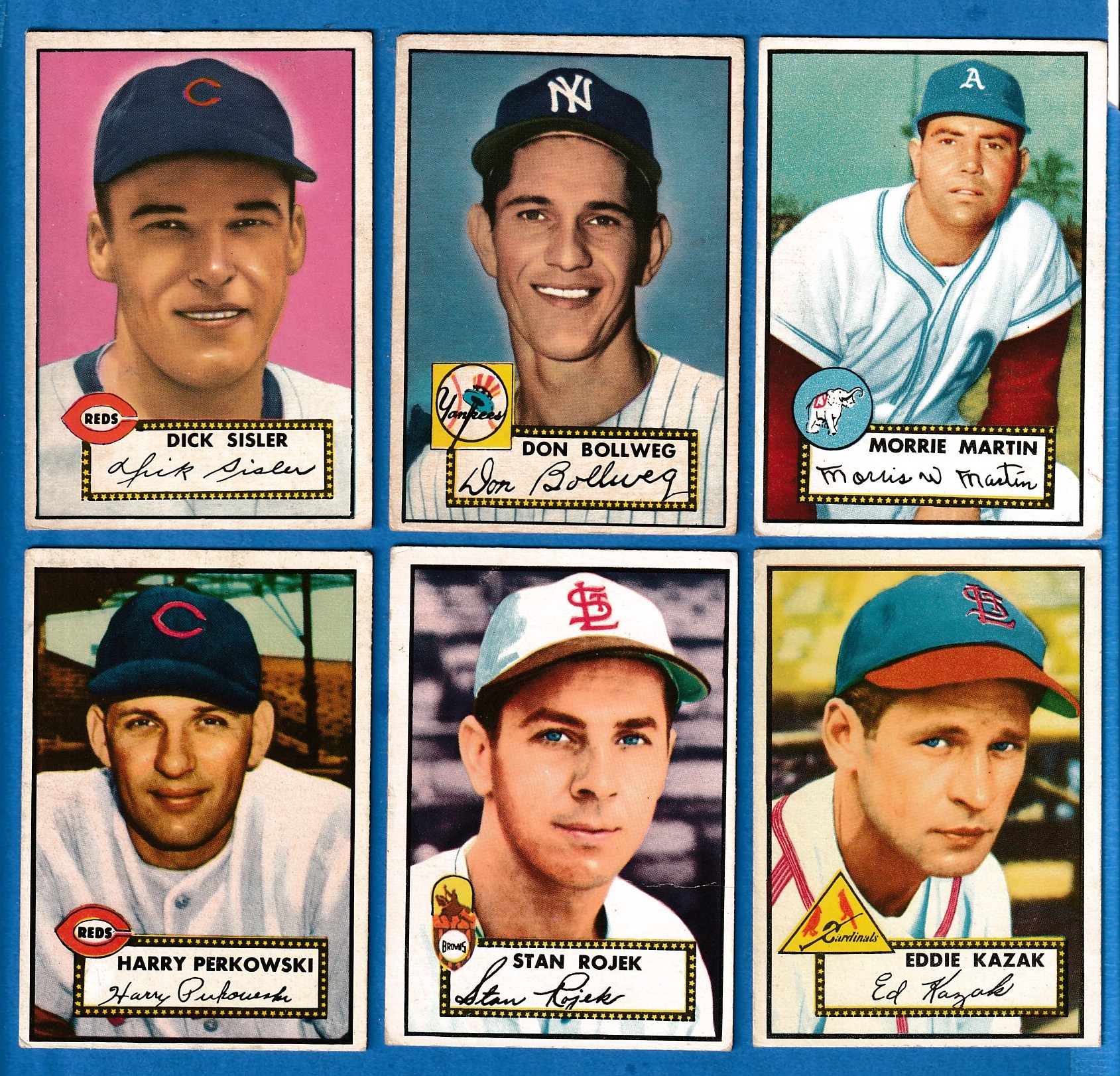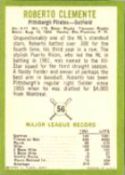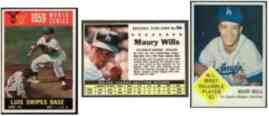1952 Topps #113 Dick Sisler (Reds)


Please wander around the website for more info, prices, values & images
on vintage baseball, football, basketball, hockey, sport and non-sports cards.


1963 Fleer Baseball Cards
|

1952 Wheaties ChampionsIn 1952 Wheaties issued this set of cards on the back of their boxes. The 2" x 2-3/4" cards needed to be hand cut from the back of the boxes making high quality samples almost impossible to find. The set featured 30 different champions from a variety of sports in both "Portrait" and "In-Action" poses for a total of 60 different cards. 10 of the 30 athletes are baseball players with football, basketball, golf, bowling, diving and other sports also included.Top players in the set are Ted Williams, Stan Musial, George Mikan, Ben Hogan and Otto Graham. |

1960 Nu-Card Baseball Hi-Lites |

High Numbers - vintage cards were issued in the ‘50s-‘70s in a series. During the baseball season, the largest number of cards were made. As the schedule progressed into September, when there would be less interest in baseball cards , Topps for one, specifically decreased production and hence much less product was available. As a result, a scarcity-factor was created and a premium holds for these first type of "short-printed" cards.
Inserts - special randomly-inserted cards which are not part of the regular set. Many modern inserts are sequentially-numbered and rarer than the card sets into which they are inserted.
O-Pee-Chee / OPC - a subsidiary of Topps, this card issue was produced specifically for distribution in Canada.
Promotional Card - generally referred to as cards issued to show what the product will look like on release and intended to help spur future sales. Often called a "promo" card.
Reprint - cards issued to reproduce the originals. With the current trend of vintage reprints, the new versions have a distinguishing characteristic evidenced by numbering.
Restored - a card or piece of memorabilia which someone has tried to return to a "like-new" condition. A restored card is considered to be of very little value.
Rookie Card - any league-licensed, widely distributed card to feature a player in his first year of trading cards.
 1963 Fleer baseball card set was cut short at 66 cards & checklist
by Topps lawsuit. But what 66 cards! Attractive & packed:
Clemente,Koufax... & 2 very scare Short Prints.
1963 Fleer baseball card set was cut short at 66 cards & checklist
by Topps lawsuit. But what 66 cards! Attractive & packed:
Clemente,Koufax... & 2 very scare Short Prints.  Maury Wills 'rookie' card is a story.
Majors in 1959, quickly superstar. But 1963 for rookie ???
In 1959 Topps deemed Wills NOT WORTHY.
Maury Wills 'rookie' card is a story.
Majors in 1959, quickly superstar. But 1963 for rookie ???
In 1959 Topps deemed Wills NOT WORTHY. 
 Wills was upset. After 1962 MVP, Topps came knocking but he said "NO!".
Finally, 1967, Wills first Topps & most costly card.
Note: 1961 Post Cereal card, years BEFORE
Wills was upset. After 1962 MVP, Topps came knocking but he said "NO!".
Finally, 1967, Wills first Topps & most costly card.
Note: 1961 Post Cereal card, years BEFORE
 'official' rookie. He also photo-bombed a 1960 Topps card.
'official' rookie. He also photo-bombed a 1960 Topps card. 